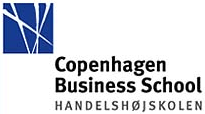No 2006-9: Impact analysis of e-tourism in Bhutan
Kim Viborg Andersen and Helle Zinner Henriksen
Additional contact information
Kim Viborg Andersen: Department of Informatics, Copenhagen Business School, Postal: Department of Informatics, Copenhagen Business School, Howitzvej 60 , DK-2000 Frederiksberg, Denmark
Helle Zinner Henriksen: Department of Informatics, Copenhagen Business School, Postal: Department of Informatics, Copenhagen Business School, Howitzvej 60 , DK-2000 Frederiksberg, Denmark
Abstract: Bhutan is in economic terms highly dependent of tourism. E-tourism is in this report assessed as a mean to maintain the current positive development in tourism and as a driver for extending tourism to new markets. Effective use of information, communication, distribution and transactions through the new media, such as the Internet, can lead to an increased level of economic activity in the tourism sector in Bhutan. Also, the indirect economic impacts on transportation, accommodation and the retail/ handicraft industry can be substantial. The macro-economic impacts of e-tourism in terms GDP growth, improvement of the foreign exchange balance, and increased employment are in this report described in three scenarios based on a forecasted annual increase in tourism by 15%. In the event driven scenario where the Bhutanese tourism industry manages to increase the number of bed nights per tourist and their consumption by 15% and to increase the number of international arrivals by 5%, there is a short term increase in the GDP output from the tourism sector and the dependent sectors by 22.4%, an improvement of the foreign exchange balance by 1.2 million USD, and an increase in the employment in the tourism sector and the dependent sectors by 5.1%. In the transition driven scenario the Bhutanese tourism sector manages to use the internet and other technologies to increase the number of international arrivals by 15% but the number of bed nights increases by only 5% and the consumption by 5%. In this scenario, the GDP output increases by 8.7% and employment by only 2.3%, whereas the foreign exchange balance increases by 623,000 USD. In the tourism consumption spending driven scenario, there is an increase in the number of international arrivals and bed nights by 5% only, but the consumption by tourists increases by 15%. Thus, the GDP contribution from the tourism sector and the dependent sectors increases by 15.5% and employment by 6.7%, whereas the foreign exchange balance increases by 873,000 USD. There are several challenges to be met in order for the full scale benefits of e-tourism to materialize. Effective online visa procedures and marketing training of tour operators are being implemented as part of the E-Bhutis project. Economic incentives for the tour operators and the scale of economics benefits are less visible in the current business structure. The relative limited international orientation of the tour market and the lack of international players at the Bhutan market are other inhibiting factors for e-tourism to materialize in the Bhutanese economy. This report also highlights several facilitating factors for e-tourism to flourish: the commitment by the Association of Bhutanese Tour Operators (ABTO) and the willingness of the various institutional players to facilitate a smoother visa application process.
Keywords: na
JEL-codes: G30
53 pages, January 1, 2006
Full text files
6439
- Copenhagen Business School, Department of Informatics
- Ordering Working Papers
- Home page for this series
Questions (including download problems) about the papers in this series should be directed to Lars Nondal ()
Report other problems with accessing this service to Sune Karlsson ().
RePEc:hhs:cbsinf:2006_009This page generated on 2024-09-13 22:14:15.

